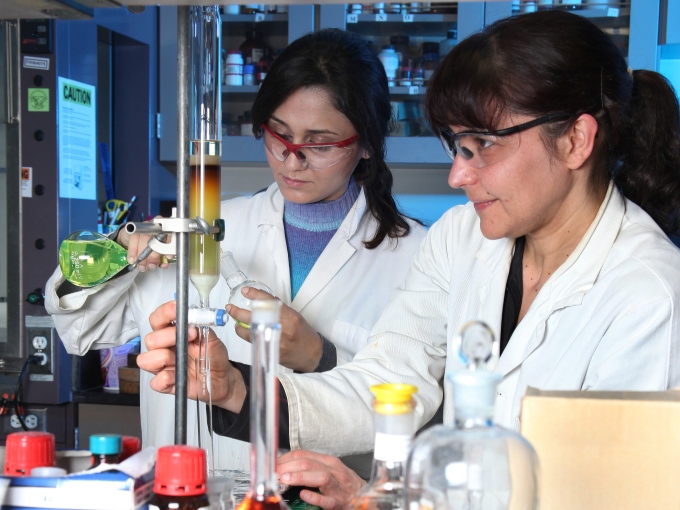The twists and turns of life
July 25, 2014
Share
This story was written by Judy Wearing and originally appeared in Issue 5, Spring 2014 of (e)AFFECT magazine. To read the full version, visit the (e)AFFECT website.
Chemist Anne Petitjean rhymes off her childhood influences with ease – the work of Louis Pasteur, a desire to be an artist, and a need to answer life’s mysteries from the “bottom up.” She found convergence of these interests in supramolecular chemistry, a field she describes as “molecular sociology … how [molecules] behave together, the way they interact, the way they feel each other, recognize each other, sense each other.”
The field applies to everything from materials science to medicine and environmental studies.
 Anne Petitjean (r) assists a student in the lab.
Anne Petitjean (r) assists a student in the lab.Like Pasteur, Petitjean’s approach to research is “to feel what society needs and be aware of where your chemistry takes you.” One of her favourite targets is DNA, which has the most predictable structure of the large, biologically important molecules. Most DNA molecules at rest in our cells have a double helix shape – with pairs of nucleic acids arranged in a twisting ladder. The arrangement is compact and keeps our genetic material safe, buried inside the helix. But cells are dynamic and when DNA’s information is read, the molecule’s architecture transforms into folds, loops, and other secondary structures.
It is these temporary structures Petitjean finds most interesting for they are “responsible for life.” Her favourite secondary structures are the guanine quadruplexes. Guanine is one of four nucleic acids in DNA, and it forms quartets –squares that lie flat, stacked like pancakes, turning a section of the DNA ladder into a wide staircase. With 23 known structural variations and a number of specific functions, Petitjean is reveling in quadruplex mysteries.